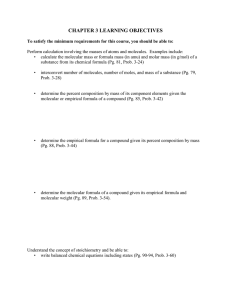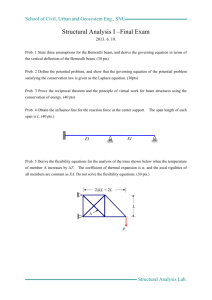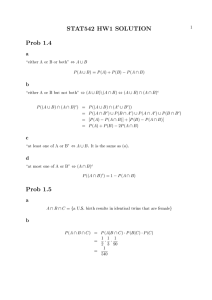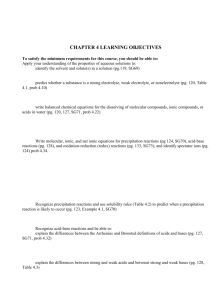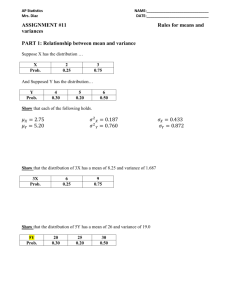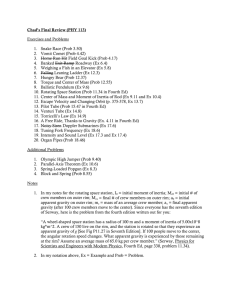chapter 3 learning objectives
advertisement
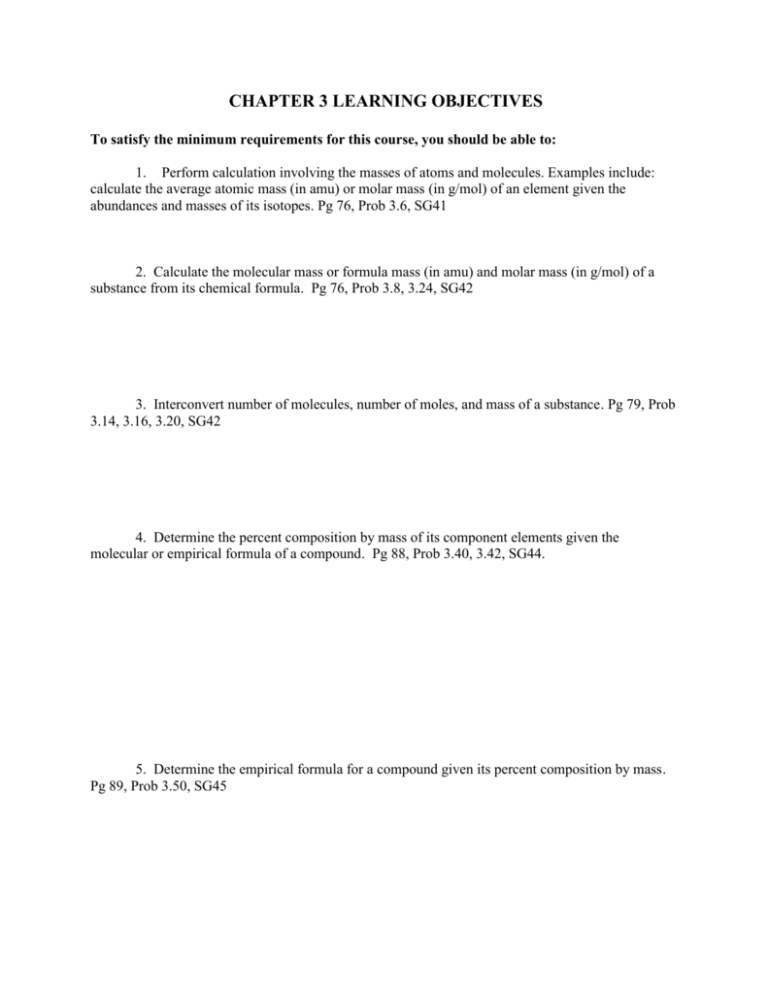
CHAPTER 3 LEARNING OBJECTIVES To satisfy the minimum requirements for this course, you should be able to: 1. Perform calculation involving the masses of atoms and molecules. Examples include: calculate the average atomic mass (in amu) or molar mass (in g/mol) of an element given the abundances and masses of its isotopes. Pg 76, Prob 3.6, SG41 2. Calculate the molecular mass or formula mass (in amu) and molar mass (in g/mol) of a substance from its chemical formula. Pg 76, Prob 3.8, 3.24, SG42 3. Interconvert number of molecules, number of moles, and mass of a substance. Pg 79, Prob 3.14, 3.16, 3.20, SG42 4. Determine the percent composition by mass of its component elements given the molecular or empirical formula of a compound. Pg 88, Prob 3.40, 3.42, SG44. 5. Determine the empirical formula for a compound given its percent composition by mass. Pg 89, Prob 3.50, SG45 6. Determine the molecular formula of a compound given the empirical formula and molecular weight. Pg. 89, Prob 3.52 Understand the concept of stoichiometry and be able to: 1. Write balanced chemical equations including states. Pg 91-92, Prob 3.60, SG46 2. Calculate the amount (in moles or grams) of a particular substance produced or used in a chemical reaction. Pg 95-97, Prob 3.64, 3.66, SG47 3. Identify the limiting and excess reagents in a reaction mixture and determine the amount (in moles or grams) of excess reagent(s) remaining at the end of a reaction. Pg 99, Prob 3.82, 3.84, SG48 4. Calculate the theoretical yield, actual yield, and percent yield for a chemical reaction. Pg 103, Prob 3.90, 3.94, SG49
